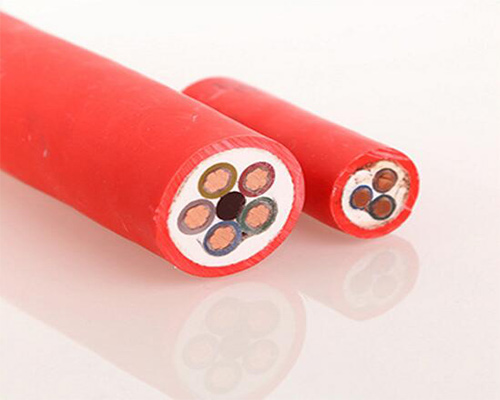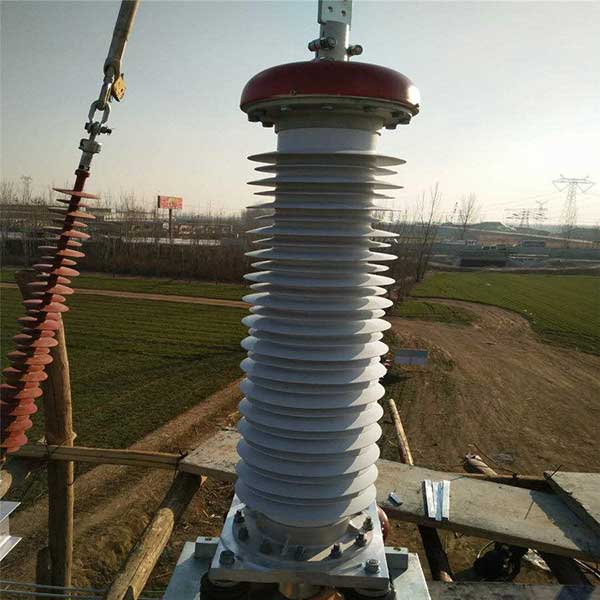En industrias y edificios donde la seguridad contra incendios es crucial, Los cables resistentes al fuego desempeñan un papel importante a la hora de garantizar el funcionamiento continuo de los sistemas vitales durante un incendio.. Estos cables especializados están diseñados para resistir la propagación del fuego y mantener su funcionalidad., incluso bajo calor extremo. En este artículo, Exploraremos qué son los cables resistentes al fuego., sus características clave, y su amplia gama de aplicaciones.

¿Qué es un cable resistente al fuego??
Los cables resistentes al fuego están diseñados específicamente para soportar altas temperaturas y continuar funcionando durante un incendio.. Su objetivo principal es garantizar que los circuitos críticos, como iluminación de emergencia, alarmas, y sistemas de comunicación, permanecer operativo, incluso en condiciones de incendio severas. Estos cables son diferentes a los cables retardantes de llama., que están diseñados para evitar la propagación del fuego pero que pueden no continuar funcionando en temperaturas extremas.
Los cables resistentes al fuego se utilizan normalmente en situaciones en las que es esencial mantener la integridad del circuito durante un incendio.. Están diseñados para cumplir con varios estándares de seguridad internacionales., como CEI 60331 (para las características de resistencia al fuego de los cables), Licenciatura 6387 (para características de resistencia al fuego de cables con integridad del circuito), y otros.
Cómo funcionan los cables resistentes al fuego
Los cables resistentes al fuego están diseñados para resistir el fuego durante un período específico mientras mantienen operativos los sistemas eléctricos.. Utilizan materiales que tienen alta estabilidad térmica., como mica o aislamiento a base de minerales, que no se degrada fácilmente cuando se expone al fuego. Además, Los conductores suelen estar cubiertos con compuestos resistentes al fuego que forman una barrera protectora., evitando fallas eléctricas.
Estos cables funcionan proporcionando una barrera física y química al fuego.. Los materiales aislantes utilizados en estos cables no se derriten ni se queman fácilmente., Mantener la estructura y la integridad eléctrica del cable incluso cuando se somete a calor intenso.. La capacidad de los cables resistentes al fuego para mantener la transmisión de energía y datos durante un incendio es lo que los diferencia de los cables normales..
Características de los cables resistentes al fuego
Los cables resistentes al fuego tienen una variedad de características que los hacen adecuados para entornos de alto riesgo.:
- Resistencia al calor
Los cables resistentes al fuego están diseñados para soportar altas temperaturas., a menudo hasta 750°C o más, por un período prolongado. Esto los hace adecuados para su uso en áreas propensas a riesgos de incendio., como plantas químicas, plantas de energía, y edificios de gran altura. - Integridad del circuito
Uno de los principales beneficios de los cables resistentes al fuego es que mantienen la integridad del circuito durante un incendio.. Esto significa que los sistemas críticos, como iluminación de emergencia, alarmas, y circuitos de control, Puede continuar funcionando incluso cuando se expone a las llamas.. - Durabilidad
Los materiales utilizados en los cables resistentes al fuego son muy duraderos y pueden resistir no sólo el fuego sino también el estrés mecánico y la corrosión.. Esto los hace adecuados para su uso en entornos industriales hostiles.. - Bajo nivel de humo y libre de halógenos (LSZH)
Muchos cables resistentes al fuego están diseñados para producir baja emisión de humo y están libres de halógenos, Reducir la liberación de gases tóxicos durante la combustión.. Esta característica es crucial en edificios donde la presencia de humos tóxicos podría poner en peligro vidas humanas.. - Resistencia química
Estos cables suelen ser resistentes a productos químicos y aceites., Garantizar que se puedan utilizar en entornos donde dichas sustancias estén presentes sin comprometer su rendimiento.. - Cumplimiento de estándares internacionales
Los cables resistentes al fuego se fabrican para cumplir con estrictos estándares internacionales de seguridad contra incendios., asegurando su confiabilidad y rendimiento en condiciones extremas. Estándares como IEC 60331, Licenciatura 6387, y ES 50200 especificar los requisitos de resistencia al fuego e integridad del circuito.

Tipos de cables resistentes al fuego
Existen varios tipos de cables resistentes al fuego., cada uno diseñado para aplicaciones y entornos específicos:
- Cables aislados con cinta de mica
La mica es un mineral con excelentes propiedades aislantes térmicas y eléctricas.. Los cables aislados con cinta de mica pueden soportar temperaturas muy altas y se usan comúnmente en aplicaciones críticas como sistemas de energía de emergencia y redes de comunicación.. - Cables con aislamiento mineral (MI Cables)
Cables con aislamiento mineral Constan de conductores de cobre. dentro de una funda de metal, con aislamiento de óxido de magnesio. Estos cables son extremadamente duraderos y resistentes al fuego., A menudo se utiliza en edificios donde la seguridad contra incendios es una prioridad., como hospitales y aeropuertos. - Bajo nivel de humo y cero halógenos (LSZH) cables
Los cables resistentes al fuego LSZH están diseñados para emitir un mínimo de humo y sin gases halógenos cuando se exponen al fuego.. Se utilizan comúnmente en espacios cerrados como túneles., sistemas de transporte masivo, y centros de datos donde el humo y los gases tóxicos pueden causar daños importantes. - Cables Poliméricos Resistentes al Fuego
Estos cables utilizan materiales poliméricos avanzados como aislamiento., que ofrecen una alta estabilidad térmica. A menudo se utilizan en servicios generales de construcción y espacios comerciales donde es necesario mantener el suministro eléctrico durante incidentes de incendio..
Aplicaciones de cables resistentes al fuego
Los cables resistentes al fuego se utilizan en una amplia gama de industrias y entornos., especialmente en entornos de alto riesgo donde prevalecen los riesgos de incendio. Estas son algunas de las aplicaciones clave.:
- Edificación y Construcción
Los cables resistentes al fuego suelen instalarse en edificios comerciales., estructuras de gran altura, y complejos residenciales. Son fundamentales para alimentar sistemas de emergencia como alarmas contra incendios., aspersores, ascensores, e iluminación de vías de escape. - Infraestructura de transporte
En sistemas de transporte como estaciones de ferrocarril., aeropuertos, y túneles, Los cables resistentes al fuego son esenciales para mantener la comunicación., señalización, y sistemas de emergencia. Estos cables garantizan que los sistemas de seguridad puedan seguir funcionando durante un incendio., Permitir la evacuación segura de personas y el control de los riesgos de incendio.. - Industria del petróleo y el gas
La industria del petróleo y el gas es altamente vulnerable a los riesgos de incendio debido a la presencia de materiales inflamables.. Los cables resistentes al fuego se utilizan para alimentar sistemas de control., zapatillas, y equipos de seguridad en refinerías y plataformas marinas. Su capacidad para operar a altas temperaturas es crucial para prevenir fallas catastróficas durante un incendio..

- Generación y Distribución de Energía
Los cables resistentes al fuego son fundamentales en centrales eléctricas y subestaciones para garantizar que los equipos esenciales permanezcan operativos durante un incendio.. Se utilizan en sistemas de control., disyuntores, y suministros de energía de emergencia, asegurando un suministro de energía continuo incluso en las condiciones más peligrosas. - Instalaciones sanitarias
Los hospitales y centros sanitarios requieren cables fiables y resistentes al fuego para sistemas críticos como los de soporte vital., iluminación de emergencia, y redes de comunicacion. Estos cables garantizan que se mantenga la alimentación de los equipos que salvan vidas incluso en caso de incendio.. - Centros de datos
Los cables resistentes al fuego también se utilizan en centros de datos donde la protección de la información confidencial es fundamental.. En caso de incendio, Estos cables ayudan a prevenir la pérdida de datos y mantener los sistemas de comunicación para respuestas de emergencia.
Beneficios de los cables resistentes al fuego
Los beneficios de utilizar cables resistentes al fuego van más allá del simple mantenimiento de la integridad del circuito.. Estos cables ayudan a proteger vidas, equipo, e infraestructura al garantizar que los sistemas críticos continúen funcionando durante un incendio.. Algunos de los beneficios clave incluyen:
- Seguridad mejorada: Los cables resistentes al fuego reducen el riesgo de fallo eléctrico durante un incendio, garantizar que los sistemas de emergencia, como las alarmas, Encendiendo, y la comunicación sigue siendo funcional.
- Tiempo de inactividad reducido: En entornos industriales, Los cables resistentes al fuego ayudan a prevenir el tiempo de inactividad al garantizar que los procesos esenciales continúen funcionando., incluso durante un incendio.
- Cumplimiento de las normas de seguridad: La instalación de cables resistentes al fuego ayuda a empresas y edificios a cumplir con las normas de seguridad, reducir el riesgo de responsabilidades legales.
- Protección de equipos: Previniendo la propagación del fuego a otras zonas., Los cables resistentes al fuego protegen los equipos valiosos de daños., minimizando los costos de reparación.
Los cables resistentes al fuego son componentes esenciales en los sistemas de seguridad contra incendios, ofreciendo una solución confiable para mantener la integridad del circuito durante un incendio. Su capacidad para soportar altas temperaturas y mantener la funcionalidad en condiciones extremas los convierte en una opción fundamental para muchas industrias., incluyendo la construcción, transporte, cuidado de la salud, y generación de energía. Instalando cables resistentes al fuego, Las empresas y los operadores de edificios pueden garantizar la seguridad de las personas y los bienes., minimizar el tiempo de inactividad, y cumplir con las normas internacionales de seguridad contra incendios.
En un mundo donde los riesgos de incendio pueden provocar pérdidas importantes de vidas y propiedades, Los cables resistentes al fuego son una inversión vital para salvaguardar la infraestructura crítica..


